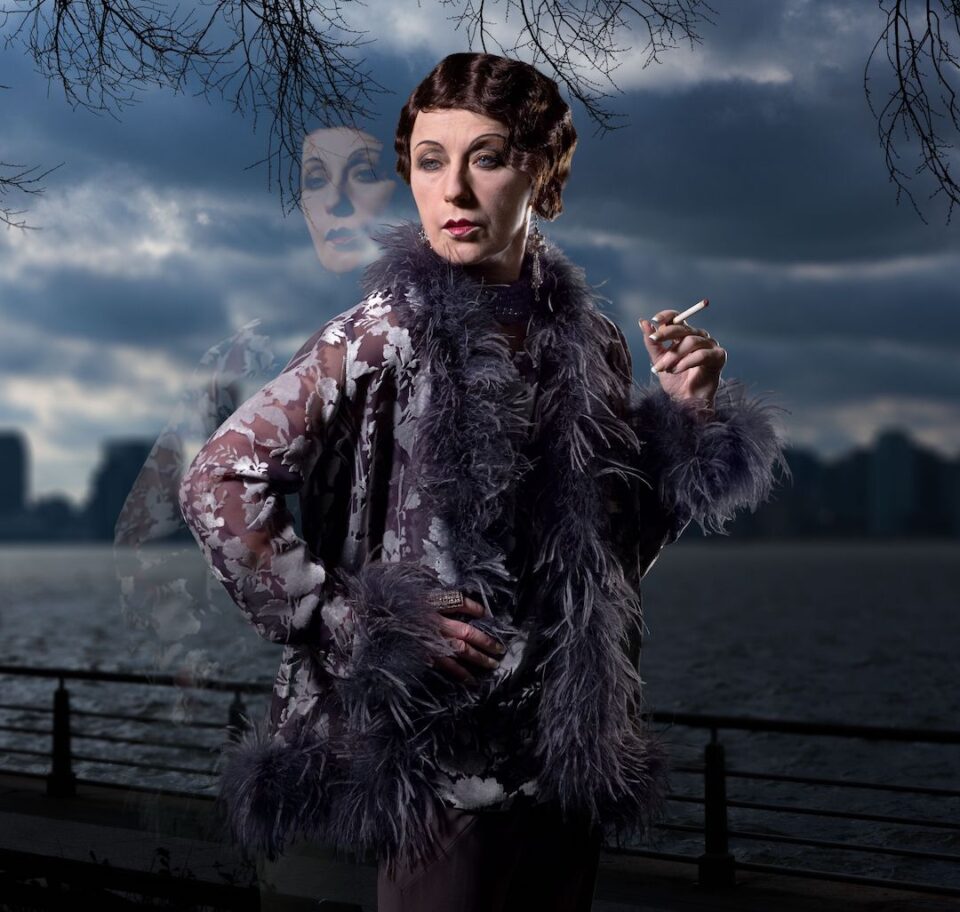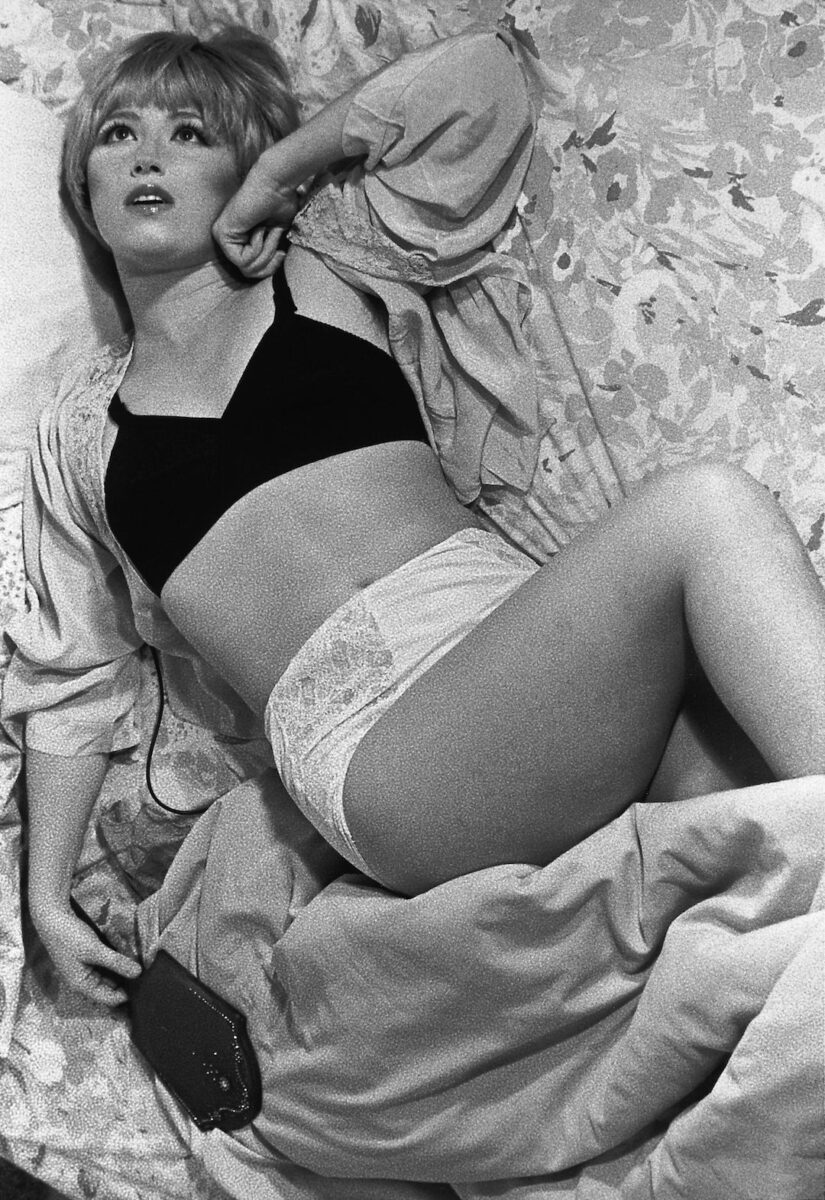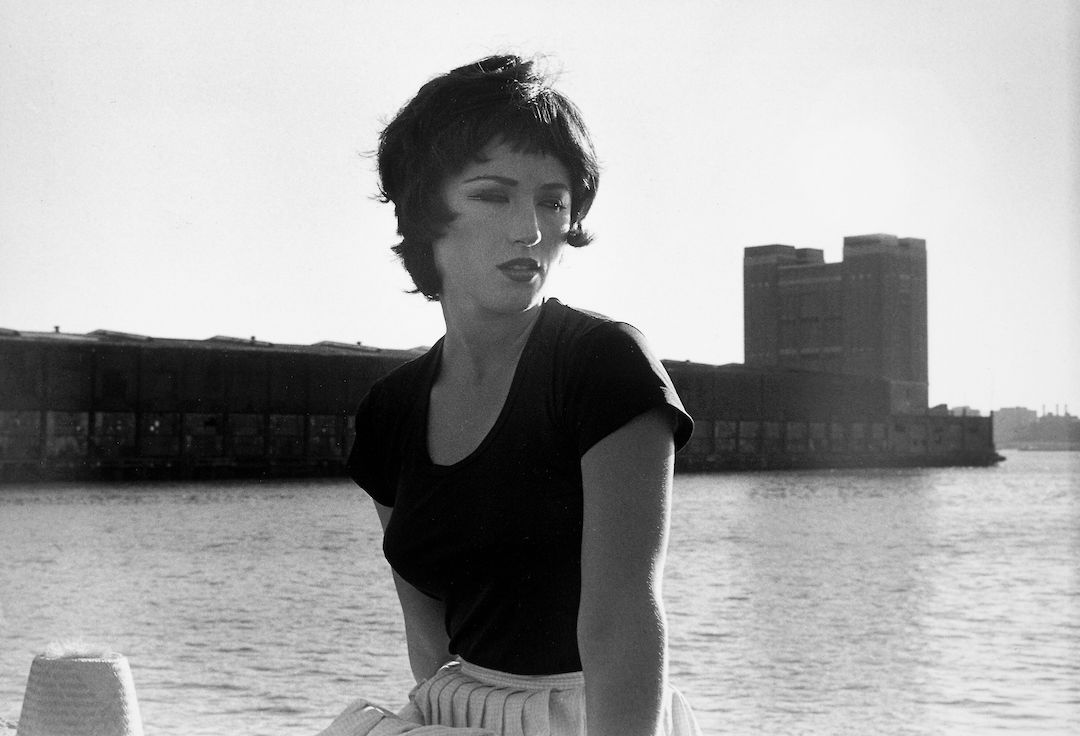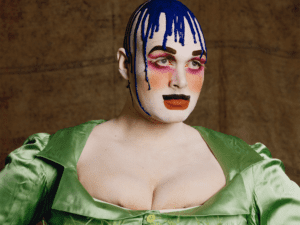On the Mediterranean island of Menorca, Cindy Sherman’s figures appear once again to perform: posing, collapsing, confronting and transforming.The Women, presented by Hauser & Wirth, is her first solo exhibition in Spain in over two decades. It draws from the artist’s vast archive of staged female identities, spanning from the 1970s to the 2010s. The title, drawn from Clare Boothe Luce’s 1936 all-female stage play The Women, signals a deliberate connection to generations of women performing femininity for one another and for the world around them. Sherman’s practice does not simply reflect on womanhood; it probes and dissembles it, laying bare the social, psychological and cinematic roles women are expected to inhabit. This exhibition is a rich and haunting meditation on how gender is constructed and consumed.
The exhibition opens with Untitled Film Stills (1977–1980), a formative series and one of the most influential photographic projects of the last century. These black-and-white images mimic publicity stills from mid-20th-century films, with Sherman cast in the role of an unnamed actress. But these are not self-portraits; they are performances. Each one is a fiction, referencing film noir, melodrama and European arthouse cinema. The women depicted – lonely, suspicious, passive, self-possessed – suggest familiar archetypes, yet their narratives are deliberately opaque. There is no single story, only the uneasy recognition that they belong to a larger visual lexicon that has shaped our understanding of femininity.
Long before discussions of the male gaze entered mainstream culture, Sherman had already begun to unpick its visual codes. The Bus Riders and Murder Mystery series, made while she was still a student, reflect a fascination with character, costume and stereotype. These early pictures feel theatrical, even cartoonish, but they demonstrate a deep awareness of how identity is performed. By embodying a host of characters – tourists, suburbanites, outcasts – Sherman positioned herself as both subject and author. She exposed the role of the camera not as a passive observer, but as an instrument of social construction. From the beginning, she collapsed the boundaries between photographer, model and director.

As the decades progressed, so did Sherman’s visual complexity. Her work grew larger in scale, more technologically sophisticated, and increasingly grotesque. The Society Portraits and Ominous Landscapes from the 2000s and 2010s depict aging socialites, fashion victims, and digitally manipulated women adrift in stylised environments. In these images, designer clothing—such as pieces from the Chanel archive – acts as both armour and artifice. The characters, often surrounded by bleak or unnatural landscapes, seem caught between self-delusion and social expectation. They are absurd and tragic in equal measure. Rather than parodying their vanity, Sherman presents these figures with a degree of sympathy, as if to suggest that the performance of beauty and status has become its own form of survival.
The Flappers series, developed between 2016 and 2018, extends Sherman’s interrogation of age and spectacle. Drawing on the 1920s icons of feminine rebellion and glamour, these images explore what happens when youthful identities are worn into middle and old age. The women here appear stuck in time – still clinging to the ideals of youth, heavy with makeup and historical reference. Yet Sherman’s lens does not judge. Instead, it invites reflection on the passage of time, on the longing for visibility, and on the societal discomfort with women who refuse to age quietly. These images challenge not only beauty norms but also our ideas about self-knowledge and self-presentation.
Throughout her career, Sherman has deliberately resisted autobiography. She offers no definitive version of herself, no artist-as-subject narrative to ground the work. Instead, she embodies multiplicity – inhabiting personas that are as layered as they are elusive. Her resistance to a stable identity has paved the way for a generation of younger artists who explore performance, gender and artificiality through photography. Alex Prager, for example, constructs elaborate cinematic scenes filled with surreal, saturated tension. Like Sherman, Prager’s women appear frozen in performance – trapped in emotional tableaux that blur fantasy with truth. Her photographs often resemble film stills from never-made movies, echoing Sherman’s own approach, yet with a distinctly modern anxiety.
Juno Calypso continues this thread with her haunting self-portraits of a character named Joyce. Set within hyper-feminine interiors – often pink, domestic and claustrophobic – her work draws attention to beauty rituals and the loneliness that can accompany constructed femininity. There is comedy here, but also sadness. Like Sherman, Calypso stages herself as an object for scrutiny, not from vanity, but to expose the mechanisms of objectification. Her use of costume and setting recalls Sherman’s methods, but with an eerie millennial flatness that speaks to today’s digital obsession with self-curation.

Nadia Lee Cohen brings another dimension to this lineage. Her photographs are hyper-stylised, grotesquely glamorous, and unmistakably theatrical. Drawing on Americana, pop culture, and fashion iconography, Cohen’s subjects resemble characters from a Lynchian dreamscape. While her style is louder and more commercial in tone, the questions she raises are closely aligned with Sherman’s: what do these performances of femininity conceal? Where does performance end and person begin? Her images, like Sherman’s, challenge viewers to consider the emotional and psychological cost of constantly being seen.
To view Cindy Sherman. The Women is to encounter a career-long enquiry into visual language – how it constructs and deforms the self. Sherman does not offer clarity. Her women are ambiguous and sometimes contradictory. They appear both as stereotypes and individuals, both powerful and fragile. This multiplicity is part of Sherman’s vision: womanhood is not a singular essence but a performed and unstable negotiation with culture. Her refusal to define identity leaves space for reflection, critique and empathy.
Across five decades, Sherman has transformed photography into a space for theatrical resistance, psychological play and feminist enquiry. She has questioned the very structure of visual representation, reframing the way we look at images, at others, and at ourselves. In doing so, she has become one of the most significant image-makers of the last hundred years. Her legacy stretches far beyond the gallery walls, influencing fashion, cinema, social media and contemporary feminism. In the context of a world increasingly obsessed with self-presentation, The Women asks us to look again – not only at the image, but at what it hides, distorts and dares to reveal.
Cindy Sherman. The Women is at Hauser & Wirth, Menorca, until 26 October.
Words: Anna Müller
Image Credits:
1. Untitled Film Still #24, (1978). © Cindy Sherman Courtesy the artist and Hauser & Wirth
2. Untitled #566, (2016). © Cindy Sherman Courtesy the artist and Hauser & Wirth
3. Untitled Film Still #6, (1977). © Cindy Sherman Courtesy the artist and Hauser & Wirth





